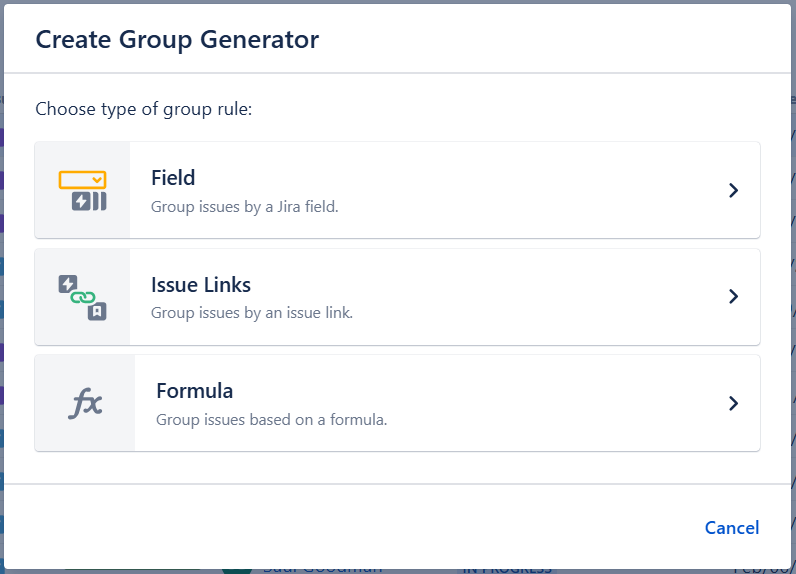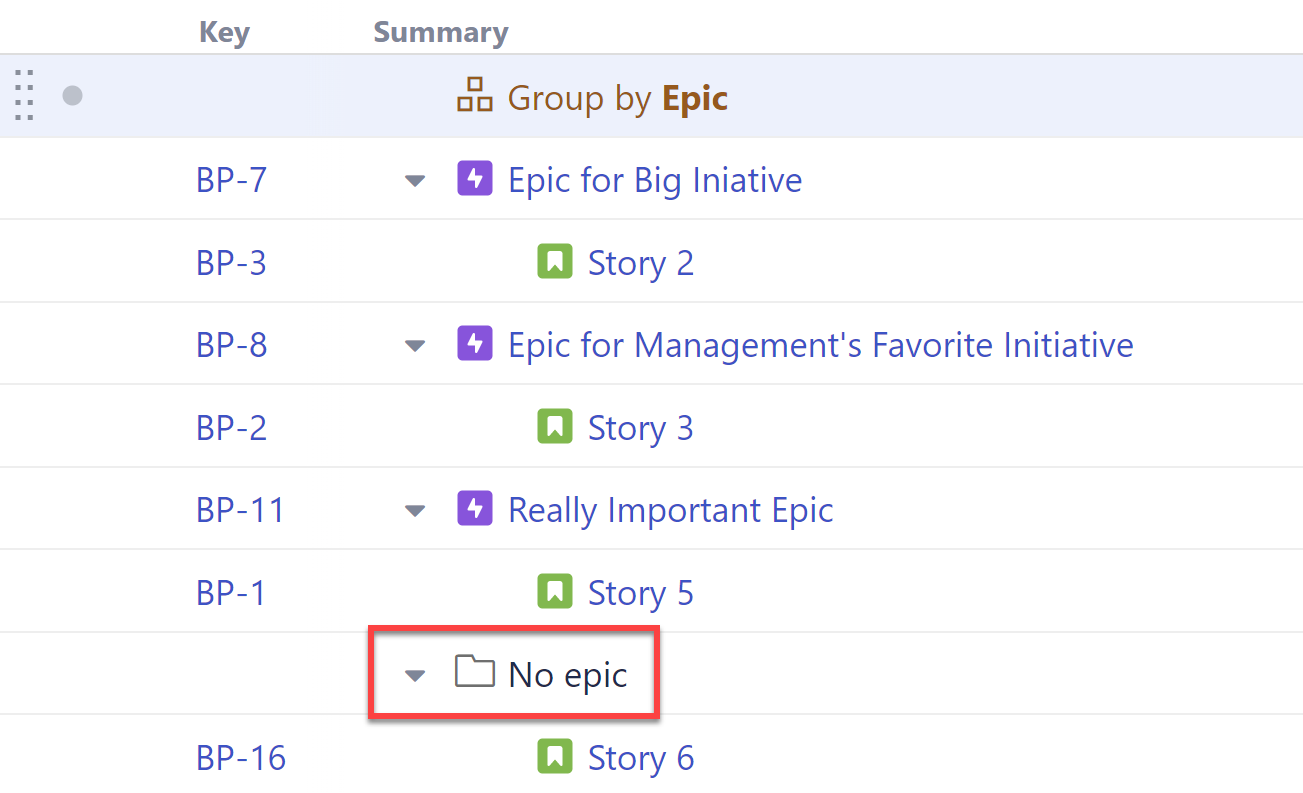The Group by Field generator allows you to group work items by most standard Jira fields.

Placement matters. Generators only affect work items beneath them, so if you want to group the entire structure, place the generator at the very top. If you place it anywhere else, it will only group the items beneath it.
Adding a Group by Field generator
To add a Group by Field generator, open the Add menu and select Group.

This will display the Group generator options. Select Field.

Configuring the Generator
Each Group by Field generator can be customized to create exactly the hierarchy you need.

Runs As
When a generator runs, it runs as the structure owner. This is important because the generator will have access to the same spaces, work items, etc. as the user listed here – if they don’t have permission to view a work item, it won’t be added to the structure.
Field
Select the field work items should be grouped by.
Moving items in the structure will update groups
If checked, you can update a work item's field simply by dragging it to a new group. For examples, if you have grouped by assignee, moving a work item to another assignee group will reassign the work item.
This option is available for the following fields: affects versions, assignee, components, epic status, fix versions, labels, priority, sprint, status, version picker (multiple versions), labels (custom field).
Consider other Groups
By default, Group generators ignore data added to your structure by other Group generators, because in most cases the added data doesn't group well.
Imagine you add both Group by Sprint and Group by Work Item Links to a structure (see Grouping Order below). Here's a breakdown of how that would work:
-
Structure starts with your top level work items (or adds them with an Insert generator).
-
Next, it applies the first Group generator in our list, the Group by Sprint. This creates a new level in your hierarchy.
-
Then Structure applies the Group by Work Item Links generator. At this point, the true "current" level is a list of sprints, which are not work items and don't have links to group them by. So Structure ignores these items, and creates the new group of work item links based on the original work items.
Group on level
Allows you to specify which level within the hierarchy the grouping should be applied to:
-
Levels are based on the placement of the generator, where "Level 1" is the level the generator is located on, "Level 2" is the level beneath that, and so on.
Place the generator on
Select where the generator should be placed within the structure hierarchy. This location will be considered "Level 1" when determining which level the grouping is applied to (see "Group on level" above).
You have three options:
-
Current level - The generator will be placed on the currently selected level.
-
Level below - The generator will be placed on the level below the currently selected item.
-
Top level - The generator will be placed at the top of the structure.
If a level is grayed out, it means it is not possible to place the generator on that level.
See Generator Scope to learn more.
"No Value" Groups
When items in the structure do not have values for the group, they are placed in a special flex item at the bottom of the grouping level, such as "No epics" (when grouping by epics) or "Unassigned" (when grouping by assignee).

This can be very useful when trying to identify items that don't have a value for a particular field. For example, we can quickly see that Story 6 is not linked to an epic. To link it to an epic, we can simply drag it to the appropriate flex item.
